#70s japanese music
Text
'70s Japan Trends Through the Music Charts (Part 4)
During the 1970s, the Japanese music industry was in the process of forming its identity. In addition to mirroring the musical preferences of the nation, the charts also served as a reflection of the prevailing societal trends and ambitions of that era. In this series, we chronicle the most significant musical trends of the decade.
'70s Japan Trends Through the Music Charts (Part 1)
’70s Japan Trend Through the Music Charts (Part 2)
70s Japan Trends Through the Music Charts (Part 3)
Trend #10: Yazawa, Okura, Carol, and the Origins of Japanese Rock 'n' Roll
The US occupation of Japan ushered in a wave of Western exports to the archipelago, among them one of the most celebrated music genres: rock 'n' roll.
Initially, the domestic itineration of the style could only produce fleeting fads like the rockabilly boom of the 50s and the "group sound" band phenomenon in the 60s. But, by the 70s, rock music had transformed all established genres. There were enka rock bands, such as DOWNTOWN BOOGIE WOOGIE BAND. Its leading man, Ryudo Uzaki, was a prolific composer, adding tinges of rock to the kayokyoku sung by fresh-faced idols like Momoe Yamaguchi. Kenji Sawada, the former vocalist of group sound band The Tigers, technically considered an "idol" back then, carried himself like a true rockstar. And, of course, the trendiest style was folk, which, inspired by US folk rock, launched multiple singer/songwriters to stardom.
While Japanese rock was everywhere, it was also nowhere. The concept of "local rock" was nonexistent at the beginning of the decade. The prevailing belief was that the Japanese language and pronunciation couldn't synchronize with the rhythms of rock music, making it impossible for a domestic version of the genre to thrive. However, this notion was upended in 1972 when Japan's first true rockstar, Eikichi Yazawa, emerged.
Yazawa's journey began in post-atomic Hiroshima. Raised in poverty by his paternal grandmother after his mother abandoned him and his father died of a radiation-related illness, Yazawa found solace in Western music heard on the radio. A fervent Beatles fan, he was inspired to pursue a career in music after going to a live concert by The Ventures, another popular foreign rock band, in his hometown. In 1968, immediately after graduating high school, he embarked on a journey to Tokyo, hoping to make a name for himself as a musician. But he was feeling pain in his buttocks from sitting for too long, so he decided to get off in Yokohama, encouraged by the fact that it was a port city, just like Liverpool.
In Yokohama, Yazawa had his solo demos rejected by all the major labels. Determined to pursue his rockstar dream, he formed a band called YAMATO, which gained some popularity playing at various night venues in the area. However, YAMATO disbanded in 1971 as its members went their separate ways. Undeterred, Yazawa continued his quest for rock stardom and held auditions for a new band, "Carol."
Carol was founded by Yazawa, who served as its vocalist, bass player, and composer. But he found a kindred creative spirit in Johnny Okura, their guitarist and lyricist, who was instrumental in shaping the band's identity. Okura conceptualized Carol's style, drawing inspiration from The Beatles during their early days in Hamburg when they played '50s rock in gritty German clubs. He also played a significant role in crafting their distinctive image, with members donning edgy leather jackets reminiscent of bikers and sporting pompadour hairstyles. Their unique aesthetic and sound quickly set them apart in the Tokyo live music scene.
Despite being a key creative force, Okura's erratic behavior and lifestyle sometimes posed challenges. When Carol booked their first shows, Okura was hospitalized in a psychiatric hospital, rendering him unreachable. In contrast, Yazawa's professionalism, meticulous management, and unwavering ambition held the band together. He took charge of negotiations for concert fees and organized their schedules.
While "real musicians," like folk stars, rejected invitations from TV stations, Yazawa recognized the medium's power and believed securing a TV slot could propel the band to stardom. But it was Okura who identified the perfect opportunity when Fuji TV's youth-oriented show "Live Young" issued a call for "Roxy fashion performers."
Airing on Saturdays, "Live Young" functioned as a televised version of the influential magazine Heibon Punch, spotlighting fashion and music trends appealing to young adults. "Roxy fashion," which was all the rage in London then, was inspired by the glam British rock band Roxy Music. Like Carol, the Bryan Ferry-led band featured visual elements reminiscent of '50s fashion, but the show's staff was uninterested and initially ignored their submission.
In response, an indignant Yazawa contacted the producers, arguing that excluding Carol, a band heavily influenced by the Roxy fashion, was a grave oversight. This assertion was a bluff; the visual resemblance was unintentional, but it worked. On October 8, 1972, Carol appeared on the Roxy fashion episode, captivating the audience with their leather jackets, pompadour hairstyles, and renditions of classic rock hits like "Johnny B. Goode" and "Good Old Rock 'n' Roll." Their appearance generated significant buzz, leading to a major label signing them just three days later.
While Carol's breakthrough was in a program linked to Heibon Punch magazine, a rival publication, Weekly Playboy, became a crucial ally in promoting the band. Weekly Playboy targeted young men, much like Heibon Punch. Still, it appealed more to working-class youth, fostering a dynamic that Shueisha, the publisher, would later replicate with other titles (AnAn's rival, Non-no, which, like Weekly Playboy, would quickly eclipse its competitor's sales). With their leather-clad appearance, extravagant hairstyles, and motorcycles, Yazawa and his bandmates resonated strongly with the magazine's readership. Consequently, editors frequently featured the band and their striking "yankee" style.

Carol's sound had a historical impact on Japanese rock music, while its aesthetic changed local fashion and fueled the "yankee" sub-culture that would take over the country in the following decade.
In Japanese culture, "yankee" is a term commonly associated with delinquent youth and their distinctive appearance. While the word remains in use, its cultural significance reached its zenith in the 1980s when teenage motorcycle gangs took over the country, revolutionizing youth culture. However, in the early 1970s, a decade before getting hold of the nation, Carol's popularity contributed significantly to the rise of the "yankee" style.
The band wasn't alone in popularizing the 50s biker/rocker aesthetic. Some Tokyo fashionistas gravitated to the trend due to the Roxy fashion movement in London. Meanwhile, in schools around the country, teen rebels were multiplying. It was a perfect storm for the "yankee" style surge, cemented by Carol's emergence into the mainstream. The band's dynamic presence and unique appeal made Yazawa and his bandmates role models for the emerging youth culture tribe.
Bosozoku ("running-out-of-control") -- gangs of teenagers with little regard for laws, who'd run around provincial Japan in their customized motorcycles -- adopted Eikichi Yazawa as their ultimate god. They'd often escort Carol band members to their concerts.
But the bond between blue-collar young people and Yazawa was a natural development as Carol's leading man truly represented something unique to Japan up to that point, a working-class rock 'n' roll icon. His superstar aura yielded excellent results for the band, quickly attracting tens of thousands to their live concerts.
Band members frequently smoked and drank on stage, creating an electrifying environment. Fights and disturbances sometimes erupted during their shows, eventually leading city halls to decline to host their concerts due to fears of property damage. Paradoxically, that pulsating, feral energy was precisely what made their shows such a hot ticket. Soon, influential cultural figures started attending their performances, like the famed photographer Kishin Shinoyama; fashion designer Kansai Yamamoto, who'd invite Carol to perform at one of his Paris fashion shows; and Masayuki Yamazaki, a pioneer of Yankee fashion and Harajuku fashion and nightlife icon.
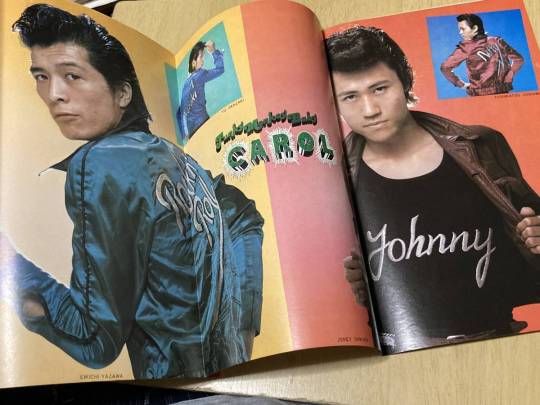
Weekly Playboy was crucial in turning Carol's members into fashion icons and leaders of millions of young men. Above, the 8/21/1970 issue, which opened with a fold-out of the band's most popular members, Eikichi Yazawa and Johnny Okura.
In February 1973, another influential figure, Jin Tatsumura, attended one of these concerts. At the time, Tatsumura, a 33-year-old NHK director from a high-society background, wasn't the band's primary audience, but he found himself captivated by the energy and fervor of the performance. Given his role overseeing NHK's documentary content, Tatsumura left the live show with an overwhelming desire to create a special documentary about the band for the national broadcaster. He believed the culture surrounding Carol perfectly encapsulated a new type of post-war youth movement.
Tatsumura poured his heart and soul into creating the Carol documentary, making it his passion project. By July, he had completed production with plans to broadcast it in prime time at the end of the month. However, to his astonishment, when the day arrived, only a nine-minute edited version of his work was aired. NHK's higher-ups deemed the debauchery and rebellious behavior associated with the band unsuitable for the public network's clean and wholesome image.
This left Tatsumura furious. Not only did he initiate legal proceedings against NHK, but he also decided to release his censored documentary in cinemas. Consequently, the public broadcaster terminated his employment and banned Carol from its airwaves. For a band well aware of the media's promotional power, being banned from the country's most influential network could have been detrimental. However, it only enhanced their status as anti-establishment icons, further fueling their popularity.
While Carol left an indelible mark on fashion and youth culture, their most significant musical legacy was proving once and for all that Japanese rock music could thrive.
Until then, Japanese song composition adhered to a rigid formula, with lyrics expected to resemble Japanese poetry. This meant sticking to a specific syllable count that dictated the song's rhythmic structure, in contrast to the more free-flowing lyrics of Western music. Moreover, many believed that the phonetics and structure of the Japanese language couldn't synchronize with the rhythm of rock.
Yazawa and Okura never wasted any time in that debate. They just went ahead and recorded their rock tunes in Japanese. And the public loved it. No one could dispute that they were rock stars playing rock music, so the debate on the viability of local rock was buried once and for all.
It wasn't just the sound, of course. Carol had to sell an image and lifestyle convincingly to break misconceptions about being genuine rockers. Yazawa's professionalism, panache, and life story – akin to the "American dream" mythology of a working-class young man coming from nowhere and achieving his ultimate dream – helped them achieve this. Still, to become the first commercially successful Japanese rockers, Yazawa and co. had to introduce some stylistic innovations to local music.
Their television debut captured the hearts of the masses as they performed English-language rock classics like "Johnny B. Goode." Since these songs were relatively unknown in Japan, many assumed they were original compositions, especially since one of the band members was also named Johnny. The electrifying segment generated immense excitement, leading the Nippon Phonogram/Phillips label to sign them and launch an aggressive marketing campaign. Starting in December, less than two months after their Fuji TV debut, Carol released singles every month.
Their debut single, "Louisiana," initially featured English lyrics by Johnny Okura. However, at the last minute, the label requested a switch to Japanese, believing it would be more commercially viable. At that point, Okura and Yazawa devised a unique lyric-writing method. Rather than striving for cohesion, they crafted lyrics that freely matched the rhythm, peppering them with sporadic English phrases like "oh yeah" and "oh baby." This unconventional approach struck a chord, as "Louisiana" became a hit, solidifying the presence of Japanese-language rock.
Yazawa also adopted a distinctive singing style called the "rolling tongue" method. This involved singing in Japanese but with an American accent. For example, instead of pronouncing a sentence like "ore no kanojyo" with proper Japanese pronunciation, he rendered it in the style of an American English phrase: "orrei nou kanoujyou."
These innovations were warmly embraced by the public. In particular, with their seventh single, "Funky Monkey Baby," achieved monumental success and became a timeless Japanese rock classic.
At the outset of 1975, despite their tremendous success, the members of Carol found themselves at odds and decided to part ways. Their farewell concert at the Hibiya Open Air Concert Hall drew 7,000 fans, doubling the venue's 3,000-person capacity. Several months later, TBS broadcast the live performance as a special episode of their popular variety show, "Ginza Now!" Staying true to Carol's style, fireworks intended for special effects accidentally ignited due to rain, resulting in the band's illuminated sign burning down and collapsing. This unscripted moment only added to the event's legendary status.
Following the band's breakup, attention turned to the songwriting duo of Okura and Yazawa, often compared to Lennon and McCartney. Although their creative synergy was evident, their clashing personalities ensured they would never reunite.
Okura, with his free-spirited mindset and erratic behavior, including a struggle with drug addiction and the revelation in 1975 that he was a "zainichi" (a Japanese-born Korean, Japan's most prominent ethnic minority, frequently subject to racism and prejudice), couldn't assimilate into Japan's conservative, buttoned-up showbiz scene. In the 1980s, he succeeded as an actor, winning a Japan Academy Award and receiving prestigious offers, including an invitation to participate in NHK's historical drama. However, an incident in 1987, in which he fell from the balcony of his seventh-floor hotel room, derailed his career, pushing him off the mainstream radar and into the underground scene, where perhaps he felt more comfortable. Okura passed away in 2014 at the age of 69.
In contrast, Yazawa embarked on a different path. With his striking good looks, remarkable style, talent, and legendary work ethic, he emerged as one of Japan's most prominent artists, with his solo career overshadowing the success of the band that propelled him to stardom.
Initially, however, his solo career faced significant hurdles.
Ever the consummate professional, Yazawa worked behind the scenes to ensure a seamless transition to a solo career. He signed a contract with Sony/CBS, borrowing funds from the label to extricate himself from his previous Phillips deal. He allocated all his Carol royalties to spend several months on the West Coast of the United States, recording his new album. However, upon returning to Japan to launch his new phase as a solo artist, he struggled to connect with his audience. The public yearned for more of Carol, not a solo Eikichi Yazawa. His concert tickets didn't sell, and his new music failed to resonate.
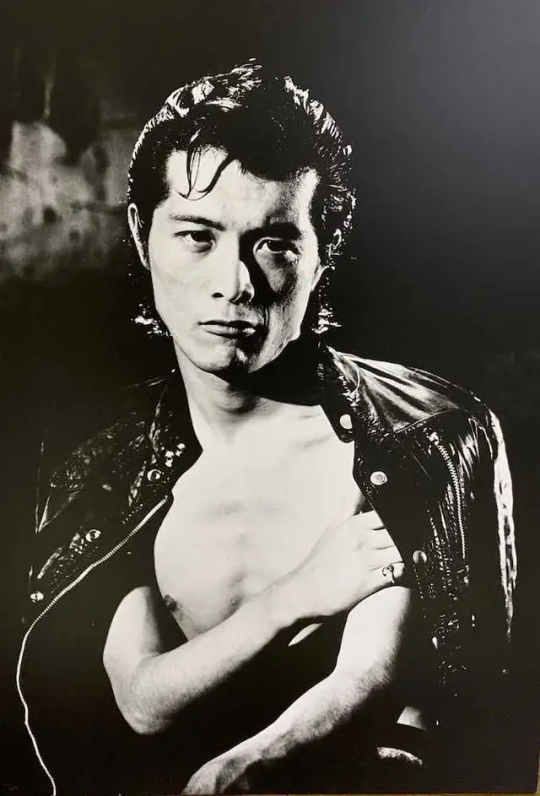
Eikichi Yazawa, from one of the minds behind Carol to a legendary solo act.
Despite the negative chatter, Yazawa remained steadfast in his belief that the public would eventually embrace him as a solo artist with a different, more ballad-oriented rock sound and style. He held live concerts to cultivate loyalty, and his determination paid off. By the end of July 1976, his Hibiya Open Air concert attracted 7,000 attendees, a turnout similar to Carol's farewell show.
The subsequent year saw him embark on an extensive tour, becoming the first local rock soloist to grace the stage at the Budokan. His single "Jikan yo tomare" (Stop Time), featured as the soundtrack for Shiseido cosmetics commercials, became a million-seller. By March 1978, the demand for his live shows had grown so much that he performed at Japan's largest venue, the Korakuen Stadium. In July of the same year, he further solidified his legendary status by releasing his autobiography, "Nariagari," recounting his journey from rags to riches. The book became a cultural phenomenon and a touchstone for an entire generation, surpassing two million copies in sales. It also shaped Yazawa's public image.
By the 1980s, Yazawa had become Japan's highest-paid musician. As the rock genre flourished throughout the decade, he attained universal recognition in the country as the king of rock. From 1983 onwards and continuing into the present, he consistently hosts sold-out nationwide tours.
Despite his immense success, the rock icon encountered personal crisis, most notably in 1998 when a business partner deceived him, siphoning off nearly $30 million in Australian investments by obtaining loans in his name, leaving him burdened with substantial debts. It took him over a decade, but he ultimately managed to repay all the money to the banks. "I can get big loans again," he cheerfully announced in the mid-2000s when he built a five-story studio in a prime location in Akasaka, a central Tokyo neighborhood.

1978 was the year Eikichi Yazawa solidified himself as Japan's top star. In January, he released the million-selling single "Jikan yo tomare," which was used in Shiseido's commercials and became one of his trademark songs (Ryuichi Sakamoto played the keyboard in the song). His fourth and best-selling studio album, "Golden Rush," came out in June, followed, in the next month, by his epoch-making best-selling autobiography, "Narigari," which would ignite a social phenomenon. In August, he became the first rock soloist to perform at the Korakuen Stadium in Tokyo.
Notwithstanding the embezzlement case, Yazawa is known for his business acumen. Since Carol's dissolution, he secured publishing rights for his work and gained control over his merchandise, a rare feat in Japanese show business. In 2008, he took a bold step by establishing his independent recording company to release his work. While numerous Japanese recording artists had previously explored the independent route, notably the folk superstars of the 1970s with their "For Life" venture, Yazawa stood as the singular success story in this endeavor.
With his records still debuting at the top of the charts, Yazawa held a stadium tour in 2022. Alongside Kenji Sawada, he is the only male soloist from the 70s capable of attracting such large crowds. If, in the mid-70s, his band terrorized NHK's higher-ups, the public network celebrated his career's 60th anniversary in 2022 with a series of primetime TV specials.
This is the unparalleled force of rock 'n' roll. Or, at the very least, it is the unprecedented force of Eikiichi Yazawa, the one who first gave the masses a taste of the rock lifestyle.
Trend #11: I Love Rock 'n' Roll
The success of Carol in the early 1970s definitively ended the question of whether Japanese rock could thrive. As the decade drew to a close, major record labels began reaping significant profits from the genre. In 1979, the progressive rock band Godiego emerged as the top-selling act of the year, surpassing idols, enka, and folk stars. However, their ascent to the top of the music charts was not due to any groundbreaking innovation. Instead, they relied on a very effective J-entertainment technique: commercial partnerships and tie-ins.
After signing Godiego in 1977, the Nippon Columbia label did not spare money for the band's promotion. Their debut single served as the soundtrack for Kanebo's cosmetics commercials, and subsequently, all their songs were chosen as themes for various TV shows and movies. However, the actual turning point came when their 7th and 8th single, "Gandhara" and "Monkey Magic," were featured as the closing and opening songs, respectively, for the top-rated NTV historical comic drama "Saiyuki" ("Journey to the West," also known internationally as "Monkey"). Riding on the coattails of the show's success, both songs became massive hits, catapulting Godiego to the forefront of the music scene.
After two years of Pink Lady's hip-thrusting disco idol pop domination, local audiences recognized a rock band at the top of the charts as a refreshing change. Their follow-up single, "Beautiful Name," was used as a UNICEF charity song, giving them another hit. Their fortune continued with the highly coveted opportunity to provide the theme for the animated "Galaxy Express 999" movie, based on Leiji Yamamoto's sci-fi manga.
Five years earlier, a TV anime adaptation of Yamamoto's seminal work, "Spaceship Battle Yamamoto," had been among the first Japanese animated works to achieve immense popularity, captivating children, teenagers, and adults alike. Its success laid the foundation for Japan's burgeoning "otaku" industry. Consequently, expectations ran high in 1979 for the big-screen anime remake of another of Matsumoto's works. By performing the movie's theme song, Godiego was assured of another hit.
By the end of 1979, the progressive rock band had secured the best-selling album and claimed four of that year's 30 top-selling singles.
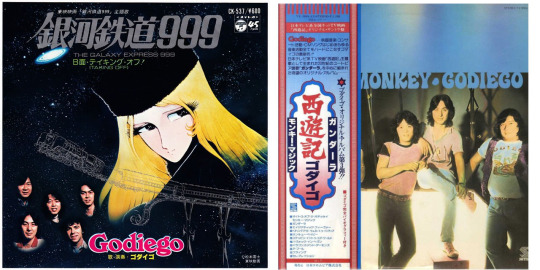
Tie-in with successful TV shows, anime, and UNICEF made the progressive rock band Godiego into the biggest act of 1979.
While good marketing can give you a great year of sales, it doesn't guarantee a prominent position in history books. Achievements based on good tie-ups and marketing are inherently ephemeral, in contrast, for example, to Carol's pivotal role in mainstreaming Japanese-language rock. As expected, the following year saw the local public's attention shift to other trendy acts, causing Godiego to quickly turn into a relic of the past.
But in the year Godiego reigned supreme, a few positions down from them, another band also had a terrific year. With their sophomore album, "10 Numbers Karatto," Southern All Stars had the third top-selling album of 1979. Their single, "Itoshi no Erii" (My Dear Elie), also performed impressively on the singles charts. Although their numbers didn't quite match Godiego's, they would ultimately have the last laugh, establishing themselves as the country's most thriving musical act of all time, with an enduring career spanning five decades. While some would become footnotes in history, Southern All Stars would warrant entire books dedicated to their profound impact on Japanese music.
Before entering history, the five-member band led by Keisuke Kawata was one of Japan's numerous college rock bands, formed at Tokyo's ritzy Aoyama Gakuin University in 1974. They inked a deal with a major label and agency in 1977 after gaining recognition as one of the highlights of the traditional Yamaha Song Contest. In 1978, their first single, "Katte ni Sinbad," whose title referenced hit songs from two of the country's biggest music stars (Kenji Sawada's "Katte ni Shigare" and Pink Lady's "Nagisa no Sinbad"), quickly turned into a hit.
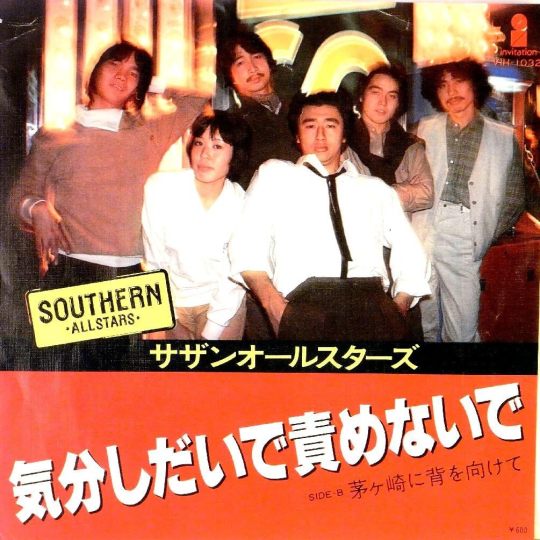
Southern All Stars, seen above on the cover of their second single, "Kibun Shidai de Semenaide."
What set Southern All Stars apart from the outset was their distinctiveness. Initially categorized as "folk," the trendy genre of the era, they were a band from an elite Tokyo university whose sound was infused with exotic foreign influences. Today, their reach and impact are vast enough to be recognized as "J-pop," the most universally appealing contemporary genre. However, akin to Carol, they also played a pivotal role in demonstrating the viability of Japanese rock.
Like Johnny Okura before him, Keisuke Kuwata discarded the rulebook on composition. Lyrics no longer needed to conform to a predetermined syllable count, emulating Japanese poetry; they merely had to synchronize with the rhythm. "Katte ni Sinbad," influenced by Latin music, featured nonsensical lyrics yet emerged as a major hit, marking a watershed moment in local music.
But that was just the beginning for Southern All-Stars. They refused to adhere to a fixed formula. Their lyrics ranged from nonsensical to cohesive, going from traditional to invented words. Their music incorporated samba, reggae, rock, pop, and folk influences. They demonstrated that there was no one-size-fits-all approach for Japanese musicians to follow. The audience eagerly joined them on this musical expedition, pushing the boundaries of what was acceptable in Japanese music.
And with that lesson, the '70s came to a close.
#carol#eikichi yazawa#johnny okura#heibon punch#weekly playboy#j-rock#j rock#70s japan#70s japanese music#godiego#southern all stars#keisuke kuwata#leiji yamamoto
3 notes
·
View notes
Text
youtube
#itsuroh shimoda#japanese 70s folk#itsuroh shimoda love songs and lamentations#70s music#70s japanese music#Youtube#70s japan
2 notes
·
View notes
Text
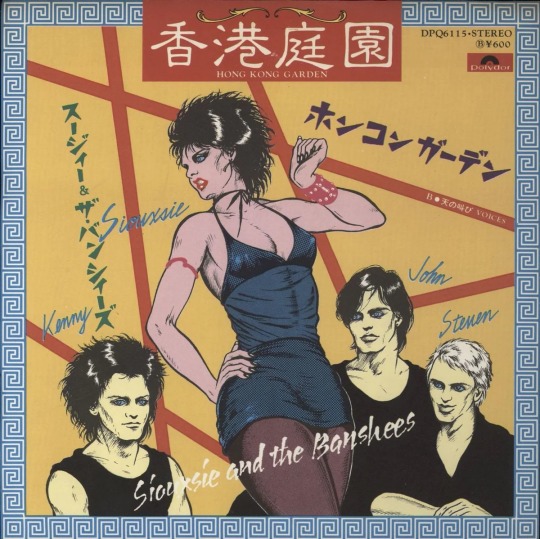
HONG KONG GARDEN 7” [DPQ 6115]
SIOUXSIE & THE BANSHEES | JP, 1979
#siouxsie and the banshees#vinyl records#goth rock#japanese#70s#new wave#hong kong garden#album art#music#u
88 notes
·
View notes
Text


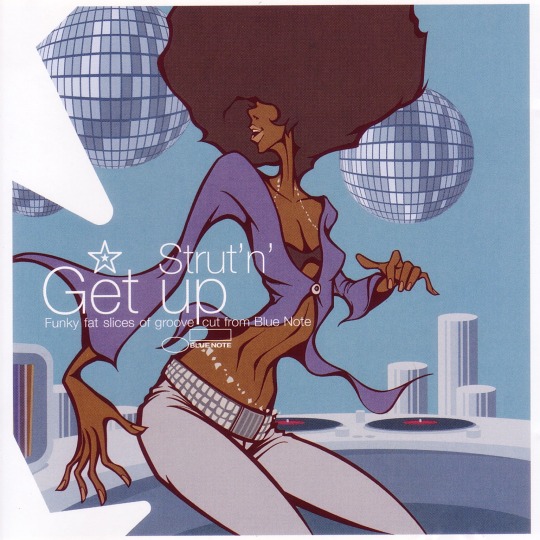

Satoshi Matsuzawa’s Groovexperience (2008)
#black culture#black fashion#black tumblr#blackgirl#glamour#black girl moodboard#black beauty#black girl fashion#black girl luxury#music#anime and manga#cartoon#asian art#black art#70s moodboard#70s aesthetic#disco aesthetic#disco#groovexperience#paymetea#black is beautiful#black women#black girl magic#black moodboard#high fashion#70s fashion#japan#japanese art#japanese#japanese artist
78 notes
·
View notes
Text
A Beginner’s Guide to Shibuya-Kei: Crossing the West to East
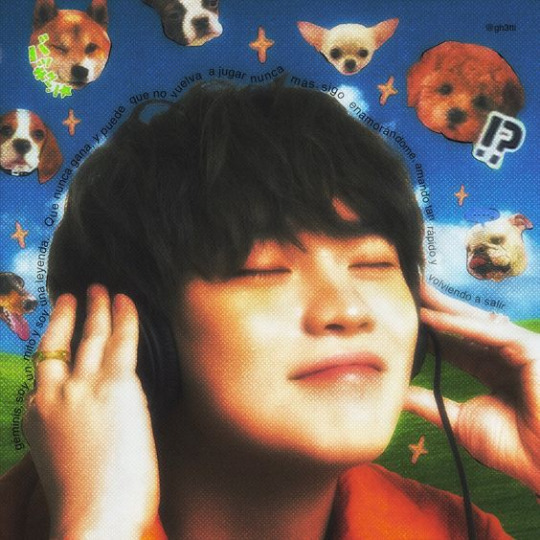
Shibuya kei is a Japanese genre that emerged in the 1990s from the trendy Shibuya shopping district of west Tokyo, which is home to some of the world's most fashionable and well-stocked record and clothing stores. Shibuya kei which directly translates to Shibuya style was the name given to the like-minded pop musicians who emerged from this consumer culture, a group of young Japanese weaned on a steady and amazingly eclectic diet of Western pop exports; the result was an unprecedented collision of sights and sounds. The music genre is characterized by a "cut-and-paste" approach inspired by previous music styles. The culture of the 1960s and Western pop music, particularly the work of Burt Bacharach, Brian Wilson, Phil Spector, and Serge Gainsbourg, had a significant influence on its sound. While Shibuya kei was not the first retro-futurist pop movement, it was one of the most daring and made even more distinguishable by its kitsch, retro fashion aesthetic. Fans of city pop, 60’s french pop, synth-pop, and even new wave would enjoy listening to Shibuya kei because of the similar sounds the genre has.
Some Popular Shibuya Kei Artist to check out:
Lamp, CAPSULE, Pizzicato Five, Flipper’s Guitar, Cornelius, Fishmans, Perfume, HALCALI, Kahimi Karie
Beginner’s Playlist to Shibuya Kei
https://open.spotify.com/playlist/79ZfbZG7wjvefsmQsg5qGk?si=1b68b85fa0434ebc
#music#shibuya kei#shibuya#japanese music#pop#pop music#indie music#indie pop#japanese indie music#japan#new wave#lamp#lamp band#fishmans#city pop#70s music#70s#80s music#80s bands#90s#90s music#90s bands#synthwave#synthpop
188 notes
·
View notes
Text
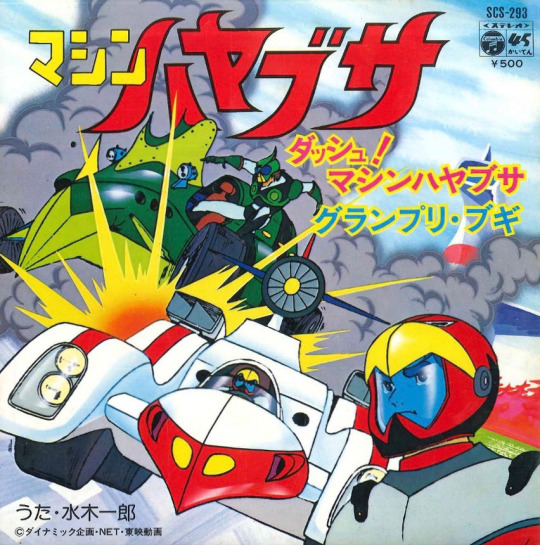
Artist - 水木一郎 (Mizuki, Ichiro)
Song - グランプリ・ブギ (Grand Prix Boogie)
["Machine Hayabusa" Ending Theme]
Release Date - April 1976
Anime: マシンハヤブサ (Machine Hayabusa)
Listen 🎶
https://rumble.com/v4ejx15-ichiro-mizuki-grand-prix-boogie.html
My blog: Showa Music Library
https://nobbykun.tumblr.com/
11 notes
·
View notes
Text
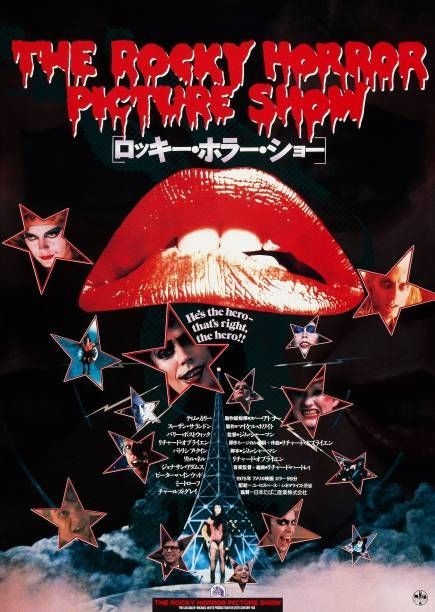
Japanese "The Rocky Horror Picture Show" poster, 1975. (Photo by LMPC via Getty Images.)
#japanese film posters#japanese movie posters#film poster#movie poster#japanese movie poster#japanese film poster#poster art#movie poster att#film poster art#getty images#the rocky horror picture show#rocky horror picture show#1975#70s cult films#cult films#cult movies#70s cult movies#horror#musical#comedy
141 notes
·
View notes
Text
Idk why but here are some Asian/BIPOC female fronting punk bands I like

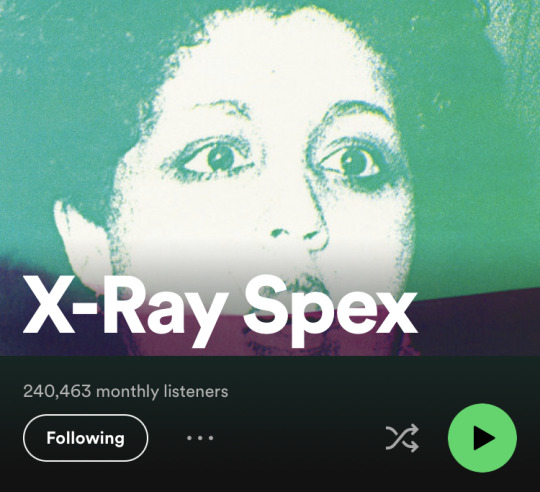
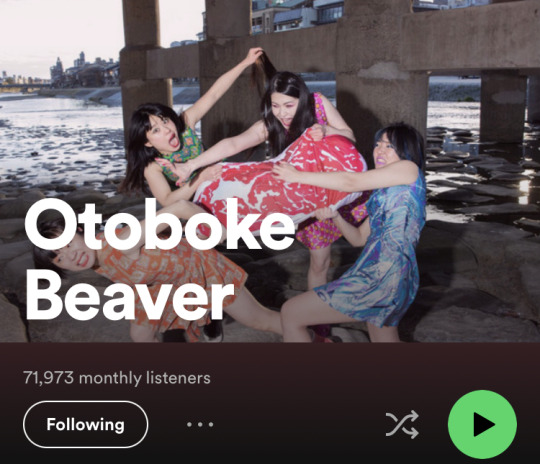
Just go listen to all of them please they're amazing
#Poc#punk music#70s punk#british punk#japanese punk#x ray spex#poly styrene#otoboke beaver#big joanie
102 notes
·
View notes
Audio
Thump, thump, thump, thump I pound nails
How long will I continue?
Who made me nail the doll?
Who made me nail the doll with grudge?
#hako yamasaki#showa era#japanese music#70's music#70s music#heartbreak#anger#noroi#curse#grudge#hurt
157 notes
·
View notes
Text
youtube
僕は一寸 (Boku wa Chotto) by Haruomi Hosono / 細野晴臣
Album: Hosono House
Year: 1973
Label: Bellwood Records
Lyrics & Music: Haruomi Hosono / 細野晴臣
#japanese new music#haruomi hosono#1973#bellwood records#70s singer-songwriter music#subcategory: folk-rock/country#tip of the new music iceberg#細野晴臣#Youtube
6 notes
·
View notes
Text
'70s Harajuku (Part 2)
The Harajuku district in Shibuya has gained international acclaim as a hub of Tokyo's youth culture and fashion scene. Its streets are lined with cafes, boutiques, and well-known fast fashion stores, drawing a constant stream of tourists, fashionistas, and teenagers. However, before the arrival of billionaire retailers, foreigners, and media attention, this area's early inhabitants were the ones who truly shaped its unique character.
'70s Harajuku (Part 1)
There's been a few books written about Harajuku and its culture in the '70s. Famed photographer Shinpei Asai wrote "Central Apartments Monogatari" (Central Apartments Tale), published in 2002. Futoshi Kimizuka interviewed some creative professionals who had offices in the building for 2004's "Central Apartments no asobi" (Walking through Central Apartments). Yasuko Takahashi, Japan's first stylist, wrote extensively about her experience working and playing in the neighborhood during that era in "Omotesando no Yakko-san" (Yakko-san from Omotesando, 2012) and "Toki no kakeru Yakko-san" (Yakko-san Who Leapt Through Time, 2015). In 2019, Non Nakamura, who started out as Yakko-san's assistant, compiled photographs and essays from influential figures of the time in "70s Harajuku Genfuukei."
This same Non Nakamura contributed what I consider to be some of the most insightful and readily available essays on this period through her "20th Century Girl" serialization in Mononcle. These essays are accessible for free on their website (in Japanese, though Google Translate provides a decent translation). Nakamura's series chronicles the culture of the 1970s in Harajuku and the broader oshare influences of that decade.
The first essay discusses how she owes her fateful meeting with Yakko-san to rock 'n' roll. Nakamura was a teen during the folk music era when rockstars had long hair, worn-out T-shirts, and bell-bottom denim. She wasn't particularly attracted to this type of fashion, so when she first saw glamorous-looking David Bowie in a magazine, she instantly fell in love with him. Her other passion was the band Carols. She passed by a poster of them, with their regent hairstyles, motorcycles, and leather jackets, on her way to her part-time job in Shinjuku and was remarkably attracted to them. After work, she ran to the record store and bought their then-just-released first single, "Louisiana." When she got home and dropped the needle on the record, the sound of rock 'n' roll took over her body, and she was utterly fascinated with the band. Soon after, she got a boyfriend who followed the regent hairstyle/leather jacket/motorcycle trend of the time.
Nakamura hated studying and wasn't interested in school clubs and activities. She'd fulfill her curiosity about the world by reading the dressmaking magazine Fukusou and admiring the avant-garde professionals that worked in it, such as the photographers (Saku Sawatari, Daitomo Yoshida, Osamu Nagahama), the illustrators (Ayumu Ohashi, Teruhiko Yumura, Yosuke Kawamura, Osamu Harada, Tamie Okumura), the models (Risa Akigawa, Brenda, Ichizo Koizumi), and the writers (Takeshi Matsuyama and Ken Sunayama).
One day, Yasuko Takahashi, aka Yakko-san, started a serialization in Fukusou. In her inaugural essay, she wrote that if she were a teen, she'd probably be chasing her rock 'n' roll dreams and dating a rocker dude her mom disapproved of. These words resonated deeply with Nakamura, who found school tiresome, yearned for an artsy and glamorous world, adored Carol and Bowie, and was dating a delinquent high school dropout who didn't earn her mother's favor. She felt seen and understood.
In her column, Yakko-san published plenty of photos of her daily life. To Nakamura's surprise, she was friends with the guys from Carol and also worked as a stylist for David Bowie. In the 17-year-old girl's eyes, she was the most incredible woman alive.
As she recounts in her second essay, her deep relationship with the Fukuso magazine team started a few months before Yakko-san's inaugural column in the October '73 issue. One day during the spring of her senior year, she felt compelled to write a letter to the magazine professing her love for it. She dreamed of being an illustrator, so she included a bunch of her doodles. To her surprise, the editorial team called her home a few months later and invited her to their office.
After school, she changed from her uniform to her favorite clothes (which included a shirt she bought from a London import shop in the basement of Central Apartments and a gingham skirt she made inspired by MiLK) and eagerly made her way to the meeting. The editors inquired about her clothing and life, and their comment, "I sensed something in you that was not Yojohan-ish," stuck with her.
To understand the context of this comment, we must go back in time to the folk music fever of the '70s, when yojohan (4 tatamis and a mat) folk was at its peak. Yojohan referred to small rooms where impoverished university students lived, often idealized in songs about young love and melancholy that dominated the charts. Nakamura was happy with the comment because, indeed, she didn't like the poor and humid vibe of said songs. She was drawn instead to dreamy pop and rock.
The teen girl left the magazine's office that day with an invite to publish a double-spread page in the June issue, full of her illustrations and thoughts. It was quite an achievement for her.
Encouraged by this experience, she didn't hesitate to write Yakklp-san a letter. And to her astonishment, Yakko-san replied! Before she knew it, they had become penpals and engaged in lengthy phone conversations. Thus began a profound friendship between a 17-year-old high school student and a 34-year-old stylist at the pinnacle of her career.
Funnily enough, Yakko-san feared meeting Nakamura and disappointing her. To the 17-year-old, it was amusing that a grown woman who organized Japan's top designer Kansai Yamamoto's show in London Fashion Week and had the initiative to collaborate with world-famous figures such as T-Rex and David Bowie would be intimidated by her.
But, as she recounts in her third essay, they finally met. First, a quick 10-minute meeting in a Shibuya coffee shop. And then a proper encounter at the renowned Leon, where she also met other cool people she used to see in the magazines. Soon after, she became a frequent visitor to Yakko-san's small apartment in Harajuku.
Initially, she was taken aback by the apartment's minimalist and compact layout, as well as Yakko's sparse possessions. Yet, within the broader context, it made sense that a trend-savvy individual in 1973 lived this way. It was the year of the Oil Shock, the first post-war recession and frugality was in vogue. Books like "Jonathan Livingston Seagull," an anti-materialism allegory, and Alicia Bay Laurel's "Back to the Earth" became bestsellers, reflecting the shift towards a more modest lifestyle.
Amid the growing popularity of the back-to-the-land movement in the United States, minimalism and healthy living gained global momentum. It was Yakko-san who first introduced Nakamura to these ideas.
Through Yakko, Nakamura also learned about "natural food," a relatively unfamiliar concept in Japan at the time. While a foreign concept to most, natural food was all the rage in the vibrant neighborhood of Harajuku, and locals bought it from the market in the basement of the luxury Co-Op Olympia condo. Additionally, a delivery service offered pesticide-free vegetables, spearheaded by a former Leon patron who had forsaken a successful creative career to explore his passion for sustainable farming. Through these encounters, young Nakamura began to comprehend that life presented various paths, and fashion encompassed not only clothing but also a holistic lifestyle, including food and living habits.
The fourth installment focuses on Sayoko Yamaguchi, one of Japan's top models of the '70s, who had worldwide success and shared a close relationship with Yakko-san. Nakamura observed that during that era, the most prominent models were of mixed heritage (haafus), characterized by big eyes, long eyelashes, and wavy hair. Notably, Lisa Akigawa was one of the most renowned among them. In contrast, Yamaguchi stood apart with her almond-shaped eyes and black bob haircut. Her unique style served as an inspiration for many Japanese girls, fostering their self-confidence. Her signature eyeliner makeup and haircut were emulated by numerous admirers. While Yamaguchi enjoyed global fame at international fashion weeks, she became a familiar face to the Japanese public through her Shiseido commercials. She was among the numerous icons in fashion and culture closely connected to Yakko-san.

During the 1970s, Sayoko Yamaguchi was one of the faces of Shiseido cosmetics.
Another notable figure in this circle was the director Juzo Itami, whose tight relationship with Yakko-san was evident in his introduction to her first book, "Aisatsu no Nai no Nagadenwa" (Long Phone Conversation with no Greeting), published in 1976. This title offered one of the first comprehensive examinations of the "stylist" profession, which was relatively obscure in Japan then.
In the fifth essay, Nakamura writes how she found out about the profession through an article at AnAn, which briefly described a stylist as "people who lease clothes for fashion shoots, run around Harajuku with large bags, line the soles of model's shoes with duct tape, coordinate clothes, and attend shoots."
As she discovered through her work with Yakko-san, stylists do way more than that. And that was also what Itami tried to convey in the introduction to Yakko's book:
"I want to introduce my friend, Yasuko Takahashi. She is a first-class stylist. When making fashion editorials or commercials, a stylist can materialize a suitable house, the right interior design, or a place just like the one you're looking for out of thin air. At the same time, they also find props that are suitable for the location and source costumes. Depending on the situation, they will interact with the models and even advise on hair and make-up, so they must be genuinely knowledgeable. Collaborating with Yakko is, without exaggeration, a heavenly experience for me. She is a consummate professional. Once upon a time, when she couldn't find a suitable location, she wandered through town all night, shedding tears of frustration until she eventually discovered one. I mean, she's persistent. Her tenacity isn't limited to her professional life; in her case, she's unwavering in allowing her creativity to roam freely."
Yakko and Itami first met after being introduced by famed photographer Shinpei Asai, who had his office at Harajuku Central Apartments. The three of them worked together on a serialization Itami had at Shūkan Bunshun magazine in the sixties, which had Asai in charge of the photography and Takahashi doing the styling.
Takahashi was impressed by Itami's sensitivity to trends on a global scale. When she went to New York, he told her to buy a Yellow Pages-sized book, "Whole Earth Catalog," which inspired his weekly column. As covered here, "Whole Earth Catalog" was highly influential among Japanese media and creative types in the late 60s and early 70s, molding much of Japan's fashion culture.
But back to Non Nakamura's column, stylist was a novel occupation. She notes that stylists became highly sought after in the 80s, with the effects of the D.C. brand boom and the bubble economy. A diverse range of stylist roles emerged, including magazine stylists, advertising stylists, men's fashion stylists, and even specialists in props and food styling, each requiring unique skills and expertise. But back then, when Yakko-san was one of the few professionals doing this job, a stylist was in charge of everything, from the models and shooting locations to the costumes, dishes, houseplants, furniture, or anything else the shoot may need.
One day, Yakko asked Non to work as her assistant on a Noriyaki Yokosuka shoot. She promptly accepted, even though she had no idea who the photographer was. However, when she mentioned him to the boys in her design school, they were impressed and told her that he was the one who photographed Sayoko Yamaguchi's Shiseido posters, as well as doing the Parco ads. Parco, the Shibuya fashion building, had the buzziest campaigns in the country under Eiko Ishioka's art direction.
When she got to the shoot, the photographer asked her to get some poppy flowers. Faced with challenges in finding these specific flowers, Non embarked on a frantic quest, purchasing as many as she could to meet the photographer's expectations. However, to her astonishment, the photographer didn't even glance at the flowers. That's when she realized that being a stylist was a tough job.
David Bowie was the theme of two installments of the column. Yakko-san introduced him to legendary Japanese designer Kansai Yamamoto, who was behind some of his most legendary costumes, and they established a close working relationship in the 1970s. During her tenure as Yakko's assistant, Non had the opportunity to meet Bowie in a 1977 photoshoot in Harajuku. One of the photographs from that session, captured by Masayoshi Sukita, ultimately was used as the cover of Bowie's 12th studio album, "Heroes."

The cover of Bowie's 12th studio album, "Heroes," was shot in Harajuku. Yakko-san was the stylist.
She also dedicated a chapter to another one of her idols, Eikichi Yazawa, whom she met just a few weeks after Carol's farewell concert as he prepared to make his solo debut. She recounts that his charm so enchanted her that she realized she didn't actually love her boyfriend at the time, breaking up with him shortly after.
Nakamura watched Carol's final concert twice. Along with the rest of the country, she followed the telecast, aired a few days later. As she recounts, she and Yakko-san were working in Harajuku on a Saturday afternoon when the stylist took a look at her watch, said, "oh, it's starting soon," and rushed to a design office at Central Apartment that had a TV (minimalist Yakko-san didn't have one at her place).
But she also was one of the lucky few who actually were at the proper concert in Hibya Open Air, which she attended all dressed up in clothes from the trendy Creamy Soda boutique in Harajuku (the owner was notoriously close to Carol's members). Infected by the feral atmosphere, she ended up in the front row and even tried to invade the stage. She succeeded in getting her right foot in before being kicked out by the security guard. But here's a twist: the security was also a regular at Harajuku's Leon coffee shop.
In the 1970s, the hippiest motorcycling gang in Tokyo was The Cools. They were known for their cool styles, hung out with models and celebrities, and were always at Leon. Of course, like all of Japan's young bad boys, they were also big Carol fans. And they actually became close to the members. For their final show, the band wanted to mimic the Rolling Stones -- which had the Hell's Angels as security -- and they invited The Cools to escort them and guard the stage.
After Carols disbanded, the Cools were actually hired by a major record label and became a proper rock band.
In the 1970s, Harajuku remained a hidden gem, undiscovered by the masses. Yet, this small district nestled within bustling Shibuya played an integral role in the histories of the most extraordinary individuals. As the rest of the country caught on, they sought a taste of Harajuku's uniqueness, propelling it into the phenomenon it has become today.
#carol#the cools#70s japan#70s japanese music#harajuku#70s harajuku#non nakamura#sayoko yamaguchi#david bowie
6 notes
·
View notes
Text

オフ・コース* – 僕の贈りもの / めぐり逢う今
10 notes
·
View notes
Text
Douzo Konomama (どうぞこのまま, Please Keep it So) (1976) - Keiko Maruyama (丸山圭子). This song is the third song on Keiko Maruyama's second album, Tasogare Memory or Twilight Memory (黄昏めもりい), released on 5 March, 1976 under the label King Records and composed by Keiko Maruyama.
This song is Maruyama-san's biggest hit. The genre of this song is generally bossa nova, pay attention to the electric piano, it's very jazzy. A perfect song to listen to at night in a bar while drinking cocktail in the late 1970s. This song was also covered by many other singers like Mayo Shono, Hiromi Iwasaki and Mizue Takada.
Media Source:
https://www.youtube.com/watch?v=FS521HcVK04
#city pop#city pop japan#city pop music#city pop songs#city pop song#japanese city pop#japanese songs#japanese song#japanese music#70s songs#70s song#70s music#1970s songs#1970s song#1970s music#1970s#1976#70s japan#1970s japan#bossa nova#jpop#j pop#keiko maruyama#丸山圭子#douzo konomama#70年代#日本の歌#日本の音楽#シティポップ#70s
4 notes
·
View notes
Text
The thing about music is that you don't need to understand the language of the lyrics in order to appreciate their beauty.
#music#this thought brought to you by me listening to a Japanese acid rock collection from the 70s and 80s.
2 notes
·
View notes
Text

Artist - 吉田よしみ (Yoshida, Yoshimi) aka Tendo, Yoshimi
Song - いなかっぺ大将 (Inakappe Taishō)
[Eng. "The Champion From The Countryside" ("Inakappe Taishō" Ending Theme)]
Release Date - September 1970
Anime: いなかっぺ大将 (Inakappe Taishō)
Listen 🎶
https://rumble.com/v4b2kh0-yoshimi-yoshida-inakappe-taisho.html
My blog: Showa Music Library
https://nobbykun.tumblr.com/
#yoshimi yoshida#yoshimi tendo#inakappe taisho#showa kayo#anime songs#japanese music#japanese songs#70s#1970#f~j#u~z
7 notes
·
View notes
Photo

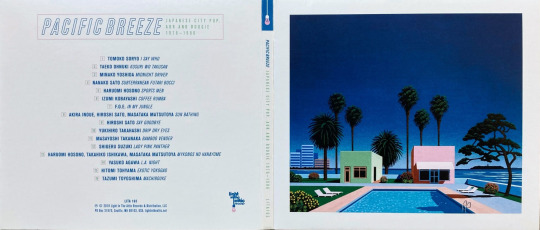
Pacific Breeze (1976-1986)
#hiroshi nagai#music#cd#70s#80s#album art#pacific breeze#compact disc#hologram parade#digipak#haruomi hosono#hiroshi sato#city pop#japanese music
5 notes
·
View notes